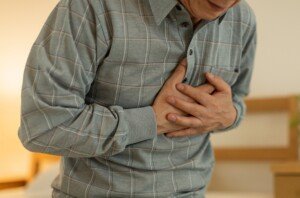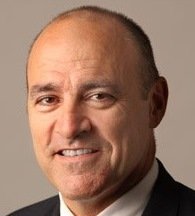
Does angina necessarily cause chest pain? Can you have angina and no chest pain?
Though it’s a strong fact that chest pain is a classic symptom of angina, or, to put it another way, that angina is a common cause of chest pain, it’s fair to wonder if every case of angina will always cause some chest pain.
“Angina or angina pectoris is the pain associated with poor blood flow to the cardiac muscle,” says Dr. Michael Fiocco, Chief of Open Heart Surgery at Union Memorial Hospital in Baltimore, Maryland, one of the nation’s top 50 heart hospitals.
“It is typically described as pressure in the chest and can radiate to the neck, jaw, arm and back.
“Some patients may only have arm, shoulder or jaw pain with nothing in the chest, and others may only have a sensation of shortness of breath.”
People with angina typically have nitroglycerin tablets (available only with prescription) on them. Upon feeling the onset of angina symptoms, they take a tablet.
Nitroglycerin works by dilating all the blood vessels in the body, including coronary arteries.
This dilation allows more blood (and thus more oxygen) to flow through them, relieving the symptoms of chest pain, or whatever other symptom that the angina is causing.
Dr. Fiocco continues, “Rarely, ischemia (poor cardiac blood flow) will be without symptoms, i.e., without angina. This is most commonly seen in insulin dependent diabetics and it is unclear why.”
There Two Kinds of Angina
Stable and unstable.
Stable angina is the type that produces symptoms upon physical exertion or mental stress, but the patient feels fine when at rest or calm.
In unstable angina, chest pain, or shortness of breath, shoulder, arm or jaw pain will occur during rest for seemingly no reason, even during sleep, awakening the patient.
And of course, symptoms will occur during physical exertion and/or emotional stress.
Six to eight million people a year in the U.S. visit emergency rooms with complaints of chest pain, and some do end up eventually diagnosed with one of the two types of angina.
However, out of all those millions of people presenting in ERs across the nation with chest pain, only about 10 to 15 percent actually turn out to have some kind of heart problem.
Besides angina, other causes of chest pain include: aortic dissection, coronary spasm, inflammation of the sac surrounding the heart, atrial fibrillation, heartburn, esophageal spasm, inflammation of ribcage cartilage, gallbladder problems, sore muscles and panic attack, to name a few.










































